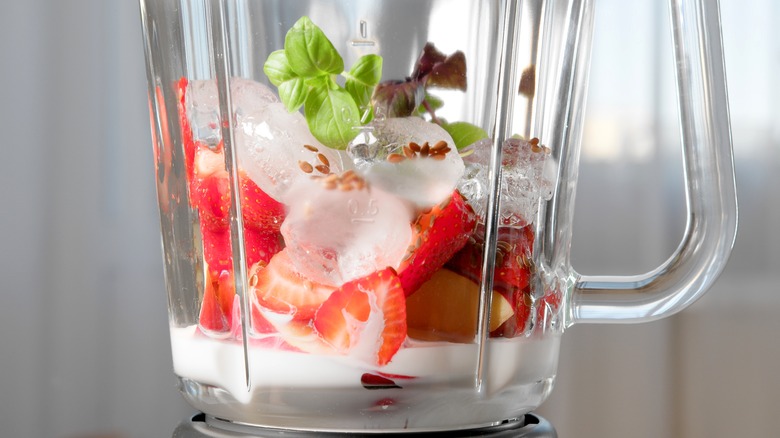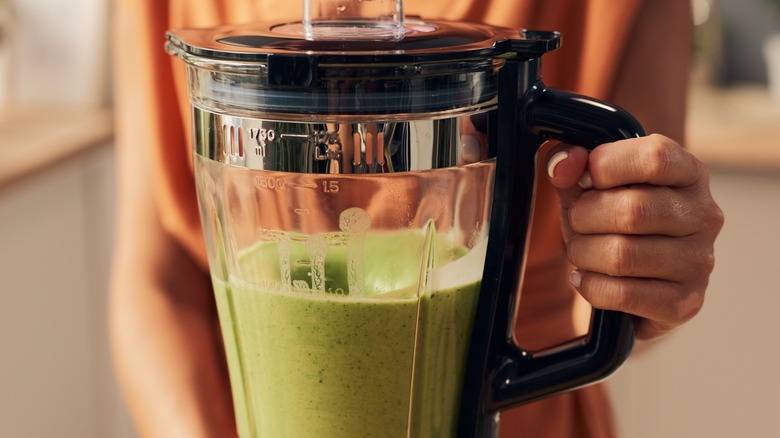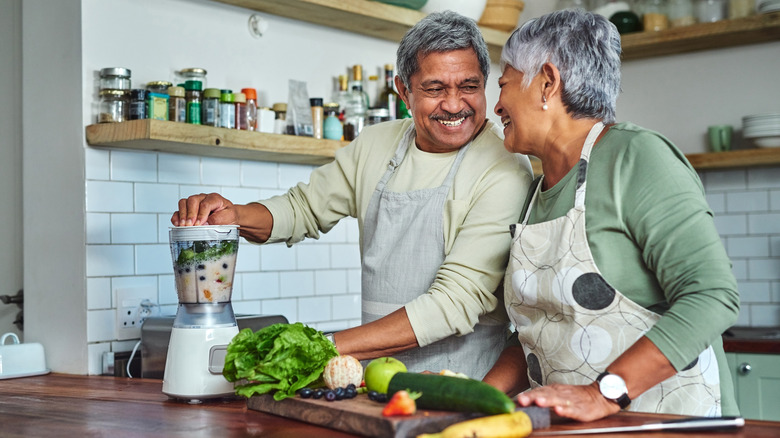Glass Vs Plastic Blender Jars: Learn Which Option Is Best For You
Several considerations go into the purchase of a blender. How many cups of food can it blend? How powerful is the motor? What shape should it be to best fit into your kitchen layout? On top of that, there is another factor to decide: The material of the jar itself. Glass or plastic? And, as always, the appliance should be fit for the tasks required of it. Let's discuss the pros and cons of glass jars first.
Glass jars can take much more of a beating — crushing ice and turning nuts and grains into flour will barely leave scratches, if any, on a glass surface. They also have decidedly more aesthetic appeal. It does not absorb odors and stains, retaining its like-new look for longer. The downsides are that they tend to be heavier than their plastic counterparts and, because they are made of glass, are likely to break when dropped. Glass jars are also generally more expensive, especially when paired with a high-powered motor.
The pros and cons of plastic jar blenders
The pros and cons of plastic jar blenders are mostly the opposite of glass jars. They get scratched quite easily if used often to crush ice or mill flour and nuts, leaving unsightly dings. If you want to process a lot of curry pastes and make smoothies, plastic is not a good bet — it is one thing to have sweet-smelling curry pastes but quite another if those aromas and flavors transfer to your smoothies. Along with scents, they also absorb the colors of the blended ingredients over time, especially if you are fond of using spices like turmeric. If this is a worry, remember to thoroughly clean your blender every time you use it; it is easier than you think!
On the bright side, the much lighter weight of plastic jars makes for easy transportation of blended goods, and the chances of them shattering when dropped onto the floor are much lower than if you were using glass jars. Plastic is also cheaper to produce than glass, which makes it a more affordable option if you are on a budget.
Which blender to choose
So, to answer the question of glass or plastic, it goes back to the qualities that these different materials possess and what you will be using your blender for. Do you foresee yourself making a lot of soups and smoothies? Are you able to budget a little more for a better-looking appliance? Then glass jar blenders are your best bet. Plastic jar blenders are great for those who will not use a blender very often and, therefore, need to spend less to purchase one. The lightweight plastic jar blenders are also much more user-friendly for those who have weaker grip strength, so if it is going to be used mainly by someone with grip limitations, plastic jars are the way to go.
Whatever you decide, just remember that there are certain foods you should avoid putting in a blender. And while waiting for this year's roundup of recommended blenders, peruse 2023's list of the best blenders to kickstart your blender search.


